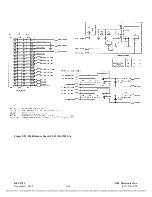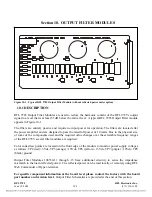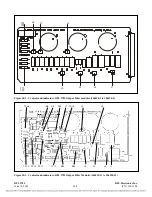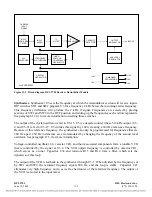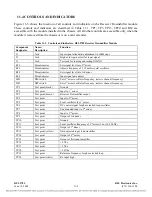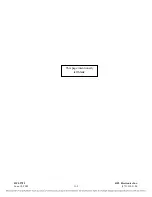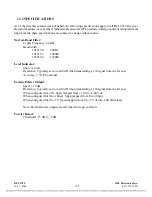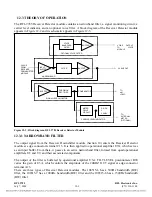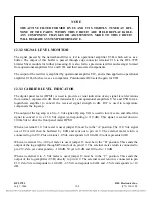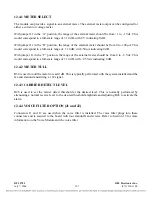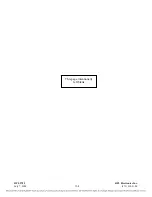
FREQUENCY
SYNTHESIZER
DIP
SWITCHES
TUNED
VOLTAGE-
CONTROLLED
OSCILLATOR
CRYSTAL
OSCILLATOR
INPUT
LOW-PASS
FILTER
INPUT
MIXER
IF
FILTER
IF
AMPLIFIER
PRODUCT
DETECTOR
OUTPUT
MODULATOR
2ND LOCAL
OSCILLATOR
CARRIER
INPUT
SIGNAL
BF OUT
* WHEN PRESENT
ON-BOARD
REGULATORS
+10V
+8V
+5V
+15V
-15V
Figure 11-2. Block diagram, RFL 9785 Receiver Downshifter Module
Synthesizer.
Synthesizer U3 sets the frequency at which the demodulator section will receive inputs.
DIP switches SW1 and SW2 program U3 for a frequency 2 kHz below the incoming carrier frequency.
This frequency difference will produce the 2 kHz if signal. Frequencies are selected by placing
sections of SW1 and SW2 in the OFF position and adding up the frequencies each section represents.
See paragraph 11.4.1 for more information on setting these switches.
The output of the crystal oscillator is fed to U5-15. U5 is a decade counter whose 512 kHz output (U5-
4 and U5-9) is fed to U3-27. U3 divides this signal by 1024, creating a 500 Hz reference frequency.
Because of this reference frequency, the synthesizer can only be programmed for frequencies that are
500 Hz apart. 250 Hz increments are accommodated by changing the frequency of the second local
oscillator. See paragraph 11.3.i for more information.
Voltage-controlled oscillator U4, varactor CR1, and their associated components form a tunable VCO
that is controlled by the signal at U3-4. The VCO output frequency is controlled by varactor CR1,
which serves as a tuner. Capacitor C34 and resistors R13 and R14 form a filter, which sets the
dynamics of this loop.
The output of the VCO is fed back to the synthesizer through U3-1. When divided by the frequency set
by SW1 and SW2, the resultant frequency equals 500 Hz, and the loop is stable. Capacitor C23
attenuates very high-frequency noise, as well as harmonics of the reference frequency. The output of
the VCO is also fed to the input mixer.
RFL 9785
RFL Electronics Inc.
June 18, 2009
11-3
(973) 334-3100



